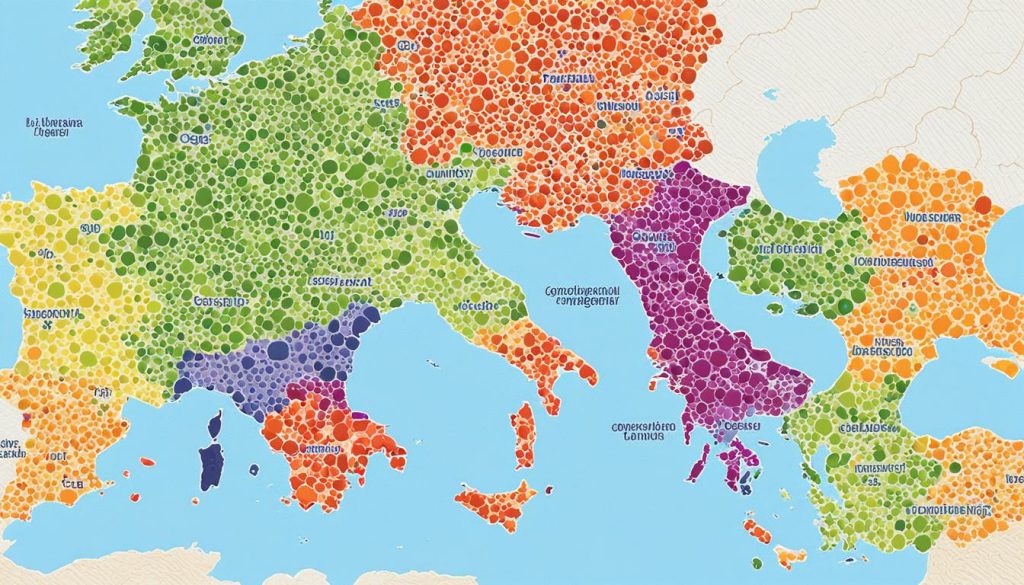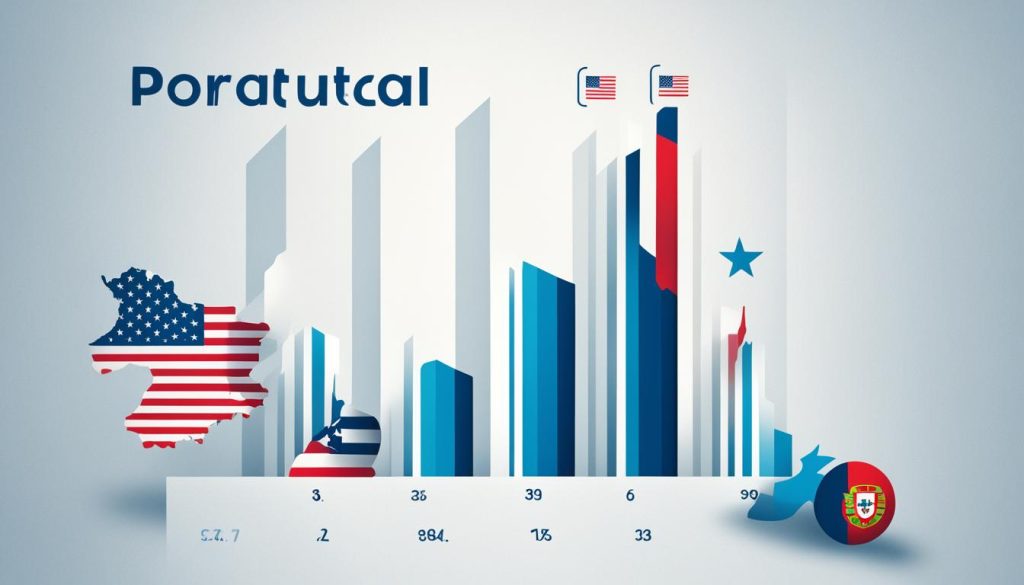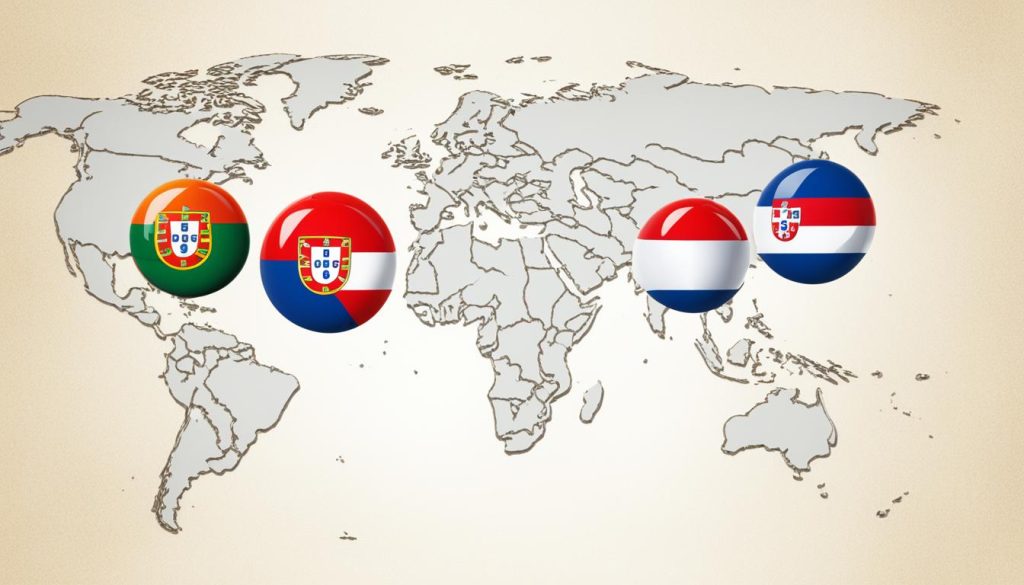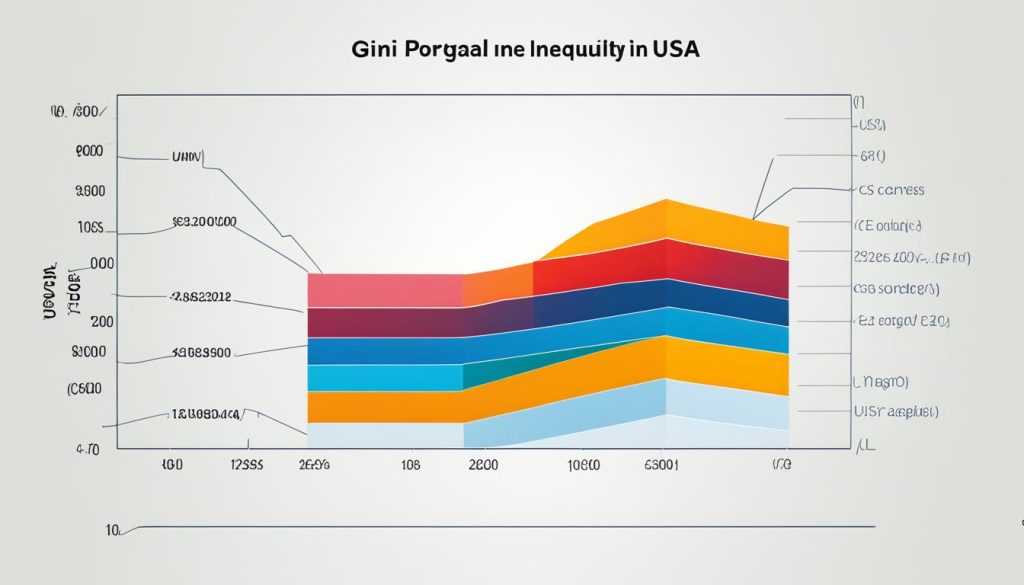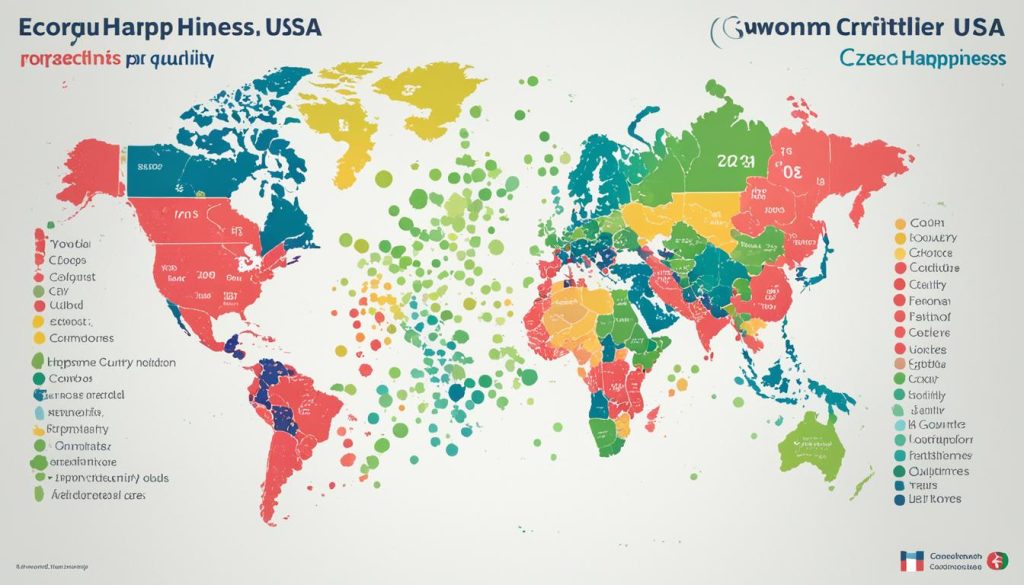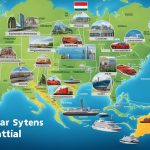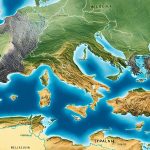To compare economies and living standards, we must consider many factors. This includes the cost of living, job options, and social setting. We’ll explore these key points in Portugal, the Czech Republic, and the USA. Through examining and comparing living conditions and economies, we aim to show what life is like in these diverse countries.
An Overview of Economic Performance
To understand how well a country is doing economically, we look at several indicators. These include GDP per capita, economic growth, and public debt. They help us see a country’s economic health. They also give us clues about its future wealth. When we compare Portugal with the Czech Republic, we see different economic strengths. This offers insights into each country’s financial approach and status.
Comparative GDP Per Capita
Comparing GDP is key to measuring a country’s economic health. It helps us understand how much wealth its citizens have. Portugal’s GDP per capita stands at $33,700.00. This shows its people’s productivity and lifestyle. But the Czech Republic has a higher GDP per capita, at $39,088.00. This suggests its citizens enjoy better economic conditions.
Real GDP Growth Rate Insights
Economic growth rates show how fast a country’s economy is growing. Portugal, despite its lower GDP per capita, has a growth rate of 5.48%. This indicates it has a vibrant, growing economy. The Czech Republic’s growth rate is 4.3%. This points to steady, though slower, economic progress.
Understanding Public Debt Dynamics
Looking at public debt tells us about a country’s financial health. Portugal’s public debt is at 125.7% of GDP. This is worrying for its financial future. The Czech Republic has a much lower public debt, at 34.7% of GDP. This suggests it follows a more careful financial plan.
These indicators, overall, show different aspects of economic well-being and policy. GDP per capita reveals the economic level of individuals. Real GDP growth and public debt tell us how Portugal and the Czech Republic manage their economies. They guide us on their journey to wealth.
Employment and Industry
Employment levels and industrial contributions are key to understanding a nation’s financial health. Changes in unemployment rates and industrial strength tell us about the job market’s condition. Together, they show us how strong and flexible the economy is.
Scrutinising Unemployment Rates
Unemployment rates help us see how well a job market is doing. The Czech Republic has a very low unemployment rate of 2.9%, showing a strong job market. In contrast, Portugal’s rate is 8.9%, showing it has more challenges finding jobs for its people.
Analysing Industrial Contributions to the Economy
The industrial sector is crucial for a country’s strength. The Czech Republic uses over half its land, 54.8%, for farming. This makes agriculture a big part of its industry. Portugal uses 39.7% of its land for the same, showing different focuses but both valuing agriculture’s role.
- The Czech Republic’s low unemployment rate shows good matching between education and industrial needs.
- Portugal has room to grow and make its economy stronger despite higher unemployment.
- Both countries’ reliance on agriculture highlights the importance of tradition and the chance for innovation.
Globalisation is changing economic landscapes rapidly. The ability of countries to adapt their unemployment rates and industrial sectors will determine their success in the global job market.
Cost of Living Analysis
Looking into daily expenses in Portugal and the Czech Republic is vital. We must look at both consumer goods prices and housing. It’s important to see the whole picture of living costs in big cities.
Comparing Consumer Goods Prices
The Czech Republic seems easier on the purse for daily items. A meal out in Portugal might cost about 10.00€, but only 7.60€ in the Czech Republic. Everyday groceries like bread and milk are also cheaper there.
Housing and Rental Market Variations
-
Examining the housing market shows their economic situations. A 1-bedroom in the city costs 936.14€ in Portugal but only 769.40€ in the Czech Republic. This shows the general trends in housing and what people can afford.
-
Bigger homes and those in high-end areas are much pricier. This really shows the gap in living costs between these places.
Understanding Living Costs in Major Cities
-
Costs in big cities reflect a nation’s economic health. Bigger cities mean higher bills for utilities like electricity and phones because of high demand.
-
Culture and public services also play a part in monthly costs. Prices vary in cities like Lisbon and Prague, affecting expenses.
Knowing these cost factors is crucial for moving or understanding Portugal and the Czech Republic’s economies.
Healthcare and Education Systems
Meeting the needs in healthcare and education is key for growth in any country. A deep look into how these key areas are funded shows what a country values most. The Czech Republic and Portugal have different ways of doing this. They show how they care for the health and futures of their people.
Health Expenditures as GDP Percentage
How much a country spends on health shows how strong its healthcare system might be. The Czech Republic spends 7.15% of its GDP on health. Portugal spends a bit more, at 9.08%. This shows that both find investing in health important, but to different levels.
Hospital Bed Allocation by Country
Looking at hospital beds tells us something about healthcare capacity. The Czech Republic has more beds, 6.5 per 1,000 people, compared to Portugal’s 3.4. This means the Czech Republic has a stronger setup for healthcare needs.
School Life Expectancy and Education Quality
- Expecting how long kids will be in school tells us about education quality. The Czech Republic expects 17 years, while Portugal expects 16. This shows the paths of education in both places.
- Funding education also shows commitment. The Czech Republic spends 5.8% of GDP on it. Portugal spends 4.9%. This money is vital for better education standards.
Income Distribution and Inequality
Exploring economic disparity requires understanding metrics like the Gini Index. These metrics shed light on income distribution and economic inequality in societies. A fair distribution suggests stability and equality, whereas uneven distribution points to a gap between rich and poor. This gap impacts societal health.
The Gini Index is key in looking at wealth distribution within countries. It scores between 0 and 100, with 0 being total equality and 100 showing complete inequality. Using this index helps us see a country’s economic inequality. It also shows how well, or not, policies are working to reduce gaps.
- Examining the income quintiles to assess the proportion of national income earned by each fifth of the population
- Evaluating tax structures and social welfare policies and their impact on the redistribution of wealth
- Considering the effects of education and opportunity on long-term income distribution trends
- Understanding how globalisation and technological advancements contribute to the widening or narrowing of income gaps
A closer look at income analysis reveals a rich picture of a nation’s socio-economic health. The Gini Index helps but doesn’t capture all inequality aspects. Policy makers should pair it with other socio-economic factors. Aim? To ensure economic growth benefits everyone in society.
Infrastructure and Transportation Facilities
Efficient infrastructure and reliable public transport support economic growth and well-being. Portugal and the Czech Republic have invested a lot in transport to connect their countries better. Thanks to these investments, people now enjoy better metro, bus, and train services in Lisbon, Prague, and beyond.
Quality of Public Transport Systems
The quality of public transport can really boost a country’s success and how well its people can work. In Portugal, they’ve updated their trams and trains. The Czech Republic is praised for its joined-up transport system. These improvements make everyday life better for residents and help attract tourists.
- Timely and frequent services, making travel more convenient
- Accessibility for everyone, which means no one is left out
- Modern digital tech for easy ticketing and updates, making trips smoother
Infrastructure Development and Investments
Investing in transportation shapes a nation’s future by preparing it for more people. Portugal and the Czech Republic see the big picture with their investments:
- Portugal uses EU funds to make its transport network better and more modern.
- The Czech Republic focuses on international routes, improving trade and connections with other countries.
These efforts not only improve the quality of infrastructure but also help the economy and strengthen regional ties.
National Welfare and Social Support
Social welfare systems show how much a country cares for its people’s wellbeing. In looking at the social safety nets in Portugal, the Czech Republic, and the USA, we see different programs that support societal health. These include healthcare help, money for those without jobs, and pensions for older adults.
When we examine these welfare systems closely, we find both differences and similarities. Portugal’s social support is deeply rooted in its culture. It focuses on shared responsibility and support from family. The Czech Republic blends government and private efforts to secure a good life for its citizens. In the USA, a mix of national and state programs cater to a larger and varied population’s needs.
- Portugal’s social welfare focuses on making health care affordable and helps retirees and those with low incomes.
- The Czech Republic offers strong job services and health programs, essential for a good life.
- The USA has a complex welfare system. It includes Social Security and new health care plans to increase coverage.
The goals of these welfare systems are the same, but how they work differs greatly. We judge these programs not just by money spent but also by how they improve lives in each country.
Economic Freedom and Business Environment
Economic freedom is key to attracting investments and growing startups in a country. As policies change, they can help businesses flourish or create obstacles. Knowing how these dynamics work is crucial to understand a nation’s economic health and prospects.
Evaluating the Index of Economic Freedom
The Index of Economic Freedom highlights important features of a free economy. These include rule of law, government size, regulatory efficiency, and market openness. A higher position in this index often means a strong business climate, which attracts large and small companies alike. This index is very important for those looking to invest or expand their business.
Business Regulations and Startup Viability
Startups do well in places with favorable business regulations. Tough or too many rules can scare away entrepreneurs. On the other hand, clear and supportive regulations can boost a country’s economic growth. The business scenarios in Portugal and the Czech Republic show how regulations can impact startup economies.
- The adaptability and responsiveness of each country’s regulations to new business models and technologies.
- The efficacy and transparency of legal and regulatory procedures for business establishment, operation, and closure.
- Availability and accessibility of resources for entrepreneurs to initiate and grow their ventures within the local and global marketplace.
These factors are key to creating an entrepreneurial environment that uses economic freedom to drive growth and success.
Quality of Living Standards
Looking into living standards around the world helps us understand how happy and content people feel. By checking the World Happiness Report and air quality levels, we can compare life in places like Portugal, the Czech Republic, and the USA.
Assessing the World Happiness Report Results
The World Happiness Report shows where countries stand on happiness. It looks at income, friends and family support, health, freedom, kindness, and how people view their government. This info lets us see how happy folks are in Portugal, the Czech Republic, and the USA.
- Examination of the economic and social dynamics that elevate well-being.
- Discussion on how societal values and culture impact overall happiness.
- Investigation of the correlation between happiness and policy-making.
Air Quality and Environmental Factors
Air pollution greatly affects our health and how well we live. It’s important to check air quality in Portugal, the Czech Republic, and the USA. This tells us how clean air ties in with living happily and healthily.
- Analysis of the current air quality indices and their health implications.
- Insight into government responses and initiatives to improve environmental conditions.
- Assessment of the public’s access to green spaces and their effects on living standards.
Looking at happiness scores and air quality gives us a full picture of living standards. It’s key for governments to use this info to make sure everyone has a great place to live.
Comparing Life Expectancy and Well-being
Talking about how life expectancy, well-being, and health outcomes are linked sheds light on a nation’s health. Life expectancy shows how health and lifestyle factors affect people in different places.
It’s not just doctors and medicine that matter to our health. Things like income, education, and where we live play a big part too. In countries with better healthcare and healthier lives, people tend to live longer. This shows how well a country can look after its people’s health.
- Life expectancy shows us how good healthcare access can make people live longer. Places with great healthcare systems usually see their people live more years.
- Well-being covers both how we feel in our minds and bodies. Both are key in seeing how healthy a society is.
- Eating well, staying active, learning how to prevent illnesses, and having parks nearby help us live longer and happier.
Studies show that where we live and work affects our health. How cities are built, pollution, and job conditions are all important.
- When governments make life better for people, both life length and happiness often get better too.
- Having programs to teach everyone about health and how to avoid getting sick helps keep everyone’s health better.
Looking at life expectancy and well-being shows us a lot about how long and well people live in different places. It highlights the need for policies that look at all aspects of health. This helps build societies where everyone has the chance to thrive.
Cultural and Leisure Opportunities
Delving into a country’s cultural and leisure options reveals a lot about its liveliness. A focus on these aspects offers residents a wide range of choices. These enhance their life quality significantly. Choices span arts to outdoor adventures.
Availability of Cultural Activities
Cultural venues are vital to a nation’s heritage. They are where creativity, history, and expression meet. These places include famous museums, historical sites, and theatres.
They attract tourists and serve locals, showing a nation’s artistic achievements. They also encourage everyone to participate, creating a united community.
Outdoor and Leisure Facilities Across Countries
Outdoor activities complement cultural venues by promoting health and activity. Places with parks, gardens, and coastlines offer many leisure options. These options range from hiking in beautiful landscapes to various sports activities.
Such facilities are key to a country’s appeal and residents’ leisure time. They play a big role in people’s happiness and health.
- Theatre-going, attending historical exhibitions, and partaking in national festivals reflect the depth of cultural opportunities available.
- Community sports events, public recreational spaces, and protected natural reserves illustrate the richness of outdoor and leisure activities.
- Social interaction and community engagement offered by these lifestyle options bring forth a robust sense of belonging and cultural pride.
The interweaving of cultural and leisure activities in societies fosters an environment for social, mental, and physical growth.
Financial Services and Consumer Banking
The heart of a strong economy is found in excellent financial services and consumer banking. These areas play a key role in making economic deals efficient. They also form the foundations for personal money management. Looking at the banking industries in Portugal, the Czech Republic, and the USA shows different methods in banking services, financial offerings, and finance options for people.
In Portugal, the banking sector has greatly evolved, aiming for sustainable growth and better digital banking services. Thanks to digitalization, online services are abundant, allowing safe transactions and easy management of finances. Portugal’s banking sector stands out for its innovation and focus on meeting customer’s diverse monetary needs.
On the other hand, the Czech Republic’s banking sector is praised for its strength and ability to keep steady. It takes a careful approach to managing customer’s money, focusing on safety and avoiding risks. With a range of banking products for individuals and businesses, it shows flexibility in meeting customer demands. The commitment to offering competitive services has made the Czech Republic known for trustworthy financial activities.
The USA is a leading force in the financial services world. It has a vast and dynamic banking industry with major influence globally. In the USA, there are many consumer finance choices, ranging from simple bank accounts to complex investment options. The competitive nature of this sector encourages continuous innovation, keeping it a powerful player in consumer finance.
In these three countries, learning how to manage money wisely is becoming more important. This has led to more educational tools and resources to help people manage their money better.
Each country tailors its financial services and banking to match its own economic beliefs and cultural settings. By always responding to consumers’ changing needs and adopting new technologies, these nations make sure their financial sectors stay strong and meet their citizens’ needs.
- Portugal: Progressive digital banking and customer-centric financial services.
- Czech Republic: Stable and secure banking sector with a focus on consumer protection.
- USA: Diverse and highly competitive financial products with a drive for innovation.
Environmental Sustainability and Green Policies
Protecting our world is now more important than ever. This has led countries to adopt strong green policies. We will look at how Portugal, the Czech Republic, and the USA combine economic growth with caring for the environment. These nations use smart management to pave the way for a future that’s good for the planet and people alike.
In Portugal, clean energy projects are a big deal. The country shines in using wind, solar, and water power, making it a top clean energy producer in Europe. Portugal’s efforts show how serious it is about cutting down its carbon footprint. It aims to lead by example and encourage a worldwide shift to greener energy.
The Czech Republic focuses on mixing environmental care into its development plans. It has introduced ways to reduce waste, add more green spaces, and improve public transport. This reduces car fumes. The Czechs aim to grow economically without harming nature. This balance is key to their future.
The USA’s approach is varied, due to its size and nature diversity. It has tough rules on pollution from factories and big projects to save natural habitats. The country uses a mix of national and local policies to better manage the environment. This shows a steady step towards a sustainable way of life in many areas.

